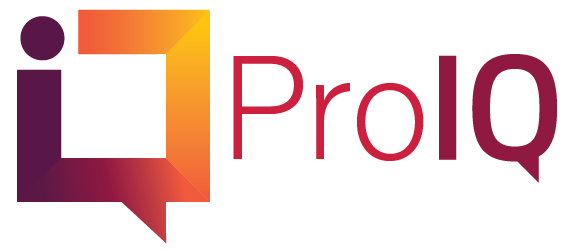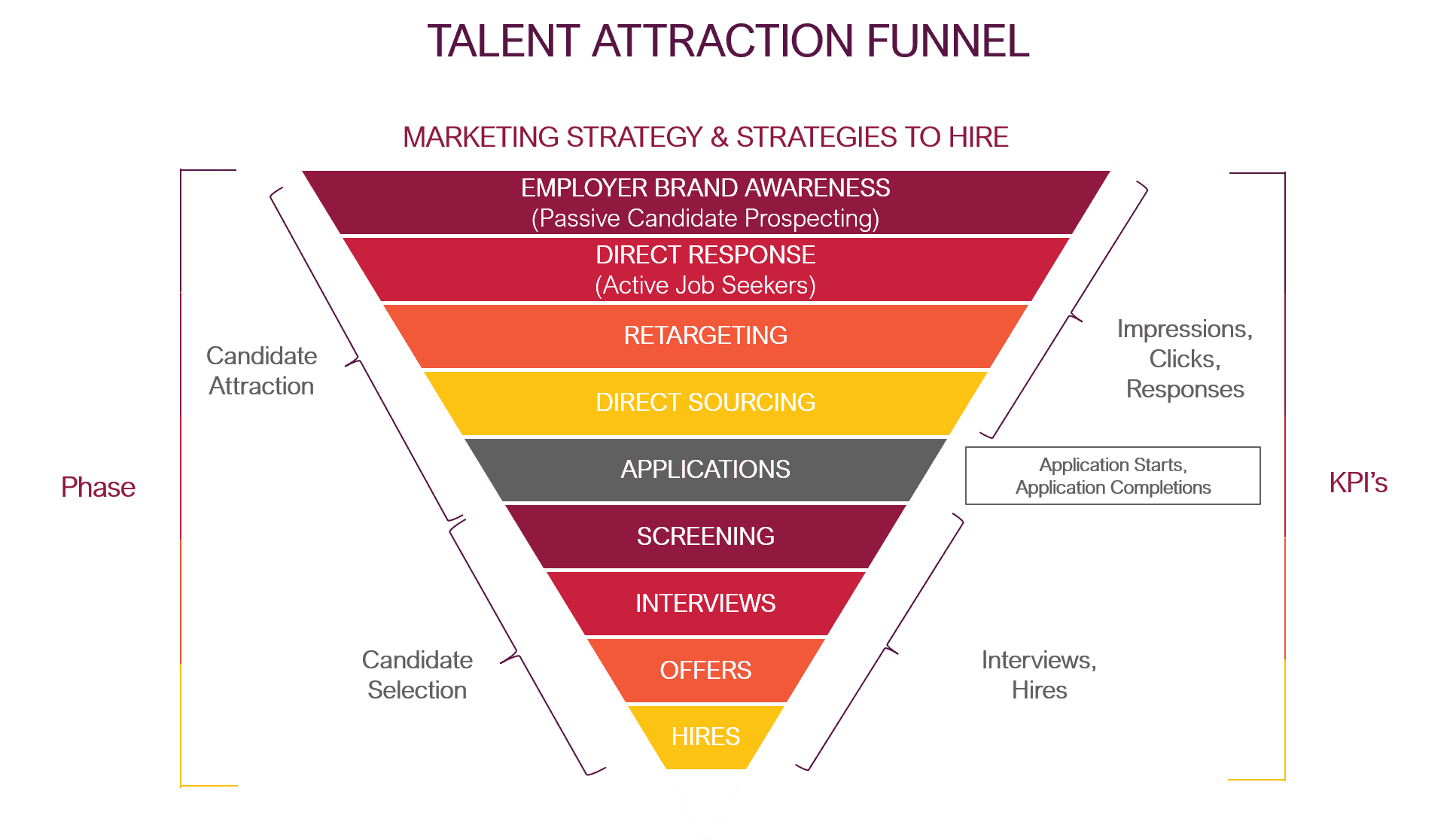You're the head of HR at a thriving company. The business is growing, and with growth comes the need for fresh talent.
You post job listings everywhere, hoping to catch the eye of qualified candidates. Weeks pass, and the few resumes trickling in don't match what you're looking for. Frustration sets in.
Now, picture a different scenario. Instead of struggling to find the right candidates, they come to you. They know your company, they're excited about the opportunity, and they fit your needs perfectly.
Sounds like a dream, right? Recruitment marketing is all about attracting top talent by using smart marketing techniques. It's the secret weapon to supercharge your hiring process.
Ready to transform your hiring game? Let's get started!
What Is Recruitment Marketing?
Recruitment marketing is a game-changer in the world of hiring. Simply put, it's the process of using marketing tactics to attract top talent to your company. Think of it as promoting your company to potential candidates just like you would promote a product to customers.
In today's fast-paced job market, recruitment marketing is crucial. Why? Because the best candidates have options.
They're not just looking for a job; they're looking for a company that stands out. That's where recruitment marketing helps your company shine among the competition.
By using recruitment marketing, you can create a strong employer brand that draws in the best candidates. It involves everything from crafting compelling job ads and engaging social media posts to building a careers page that showcases your company culture.
When done right, recruitment marketing attracts more applicants and brings in those who are a perfect fit for your team.
Crafting a Winning Recruitment Marketing Plan
Having a solid recruitment marketing plan is like having a roadmap for your hiring journey. Without it, you're just throwing darts in the dark, hoping to hit the bullseye. A good plan helps you stay:
- Focused
- Organized
- Effective
So, why is having a plan so important? First, it saves time and resources. Instead of trying random tactics, you have a clear strategy that guides your efforts.
Second, it ensures consistency. Your message stays the same across all platforms, making your employer brand strong and recognizable.
Finally, a plan helps you measure success. You can track what's working and what's not, making it easier to adjust and improve.
Now, let's outline the key parts of a winning recruitment marketing strategy:
Define Your Goals
Are you looking to fill a certain number of positions? Do you want to attract candidates with specific skills? Knowing your goals will shape your entire strategy.
Know Your Audience
Understand who your ideal candidates are. What are their interests, values, and career aspirations? This knowledge will help you craft messages that resonate with them.
Build Your Employer Brand
Highlight what makes your company a great place to work. Share stories about your:
- Culture
- Values
- Employee experiences
Make sure your brand message is consistent across all platforms.
Use Data and Analytics
Track the performance of your recruitment marketing efforts. Use tools to measure website traffic, social media engagement, and application rates. Analyzing this data will help you fine-tune your strategy.
Matching your recruitment goals with your marketing efforts is key. For example, if you aim to hire more tech talent, focus on platforms and content that appeal to tech professionals.
Align your messages with what these candidates value, like innovation and growth opportunities.
Talent Acquisition Tips for Success
Finding and hiring great talent can feel like searching for a needle in a haystack. But with the right tips, you can make the process much easier and more effective.
First, build a strong candidate pipeline. Don't wait until you have an open position to start looking for candidates.
Keep a list of potential hires who have shown interest in your company or who you've connected with in the past. This way, when a job opens up, you have a pool of qualified candidates ready to go.
Next, use multiple sourcing channels. Don't rely on just one platform to find candidates. Use job boards, social media, employee referrals, and professional networks like LinkedIn.
Different channels reach different audiences, so casting a wide net increases your chances of finding the right person.
Start Posting
Craft engaging job descriptions. A job description is often the first impression a candidate has of your company. Make it count!
Use clear, concise language and highlight what makes your company unique. Include:
- Key responsibilities
- Required skills
- What the candidate can expect from the role
Don't forget to showcase your company culture and values.
Leverage technology. Use recruitment software and tools to streamline the hiring process. Applicant tracking systems can help manage resumes and applications.
AI tools can screen candidates and match them to job requirements. These technologies save time and help you focus on the best candidates.
Communicate Effectively
Don't just wait for candidates to come to you. Reach out to potential hires, even if they're not actively looking for a job.
Send personalized messages to candidates who might be a good fit and invite them to learn more about your company. It shows that you're actively interested in them and can make them more likely to consider your offer.
The way you treat candidates during the hiring process can make a big difference. Keep communication clear and timely, provide feedback, and make sure the interview process is smooth and respectful.
Building relationships within your industry can lead to referrals and a better understanding of where to find top talent. Attend:
- Industry events
- Join professional groups
- Engage with potential candidates online
Stay Updated on Industry Trends
Keep an eye on what's happening in your industry and adjust your strategies accordingly. Being aware of trends and changes can help you stay competitive and attract the best candidates.
Finally, be flexible and open-minded. Sometimes the perfect candidate doesn't fit the traditional mold. Be open to different backgrounds and experiences.
A diverse team brings fresh perspectives and innovative solutions.
Effective Job Marketing Techniques
So, you've just posted a job opening. Days turn into weeks, and your inbox is still empty. It's frustrating, right?
Let's change that with some effective job marketing techniques that will get the right candidates knocking at your door.
Tell Your Story Through Content
Think of your job listings as a story you're telling. Share blog posts about your team's adventures, create videos that show a day in the life at your company, and highlight employee success stories.
When potential candidates see these, they'll get a sense of your company's personality and envision themselves being a part of it. Share these stories on your website and social media to reach a wider audience.
Get Found with SEO
Ever searched for something online and been amazed at what pops up? Make sure your job postings are part of those magic search results. Use relevant keywords naturally in your job titles and descriptions.
An optimized careers page helps too. When candidates search for jobs in your industry, they'll find you easily.
Let Employees Do the Talking
Nothing beats a genuine story from someone who's living it. Share testimonials from your current employees.
Have them talk about their experiences, growth, and what they love about working at your company. These stories can be very convincing and make potential candidates think, "I want to work there too!"
Lights, Camera, Action
A picture is worth a thousand words, but a video? Even more. Create short, engaging videos that:
- Show off your office
- Introduce team members
- Explain what different job roles involve
Post these videos on your careers page, social media, and job boards. They're eye-catching and can quickly grab a candidate's attention.
Be Part of the Community
Think of your local community as a goldmine of talent. Participate in local events, job fairs, and community programs. Building a presence in your community helps you connect with potential candidates and create a positive image.
Plus, people often trust word-of-mouth referrals from these events.
Partner with Schools
Remember the excitement of landing your first job? Tap into that energy by partnering with colleges, universities, and vocational schools.
Offer internships and co-op programs to build a pipeline of eager young talent. Reaching out to schools helps you find new hires and positions your company as a leader and mentor in your industry.
Network in Professional Groups
Join industry-specific groups and associations. These are excellent places to share job postings, engage in discussions, and network with potential candidates.
You'll meet specialized talent and stay updated on the latest industry trends.
Host Webinars and Workshops
Organize webinars and workshops on hot topics in your industry. This shows that your company is a thought leader and attracts candidates who are keen to learn and grow.
It's also a great way to showcase your company culture and values.
Show Off Your Benefits
Everyone loves perks. Make sure to highlight the unique benefits your company offers, like:
- Competitive salaries
- Flexible working conditions
- Professional development opportunities
Communicating these perks can make your job postings stand out and attract top talent.
Keep Improving
Always keep an eye on how your job marketing efforts are performing. Use analytics to see what's working and what needs tweaking.
Adjust your strategies based on this data to ensure you're effectively reaching and engaging with your target audience.
Boosting Your Employer Brand
Think of employer branding as your company's reputation in the job market. It's how potential candidates perceive you as a place to work. A strong employer brand makes your company stand out and attracts top talent.
What Is Employer Branding?
Employer branding is all about showcasing what makes your company a great place to work. It involves highlighting:
- Values
- Culture
- The benefits you offer employees
It's your company's personality, seen through the eyes of your current and future employees.
A strong employer brand helps you attract and retain the best talent, making your recruitment efforts much more effective.
Why a Strong Employer Brand Matters
Imagine candidates lining up to work for you, not just because of the paycheck, but because they believe in your mission and values. That's the power of a strong employer brand.
It makes your company more attractive to high-quality candidates. When people see your company as a great place to work, they're more likely to apply and stay longer, reducing turnover and saving you time and money on recruitment.
A strong employer brand also boosts employee morale and engagement. When your team is proud to work for you, they're more productive and act as brand ambassadors, spreading the word about your company.
Tips to Improve Your Employer Branding Strategies
Your employees are your best advocates. Encourage them to share their positive experiences on their personal social media accounts and professional networks like LinkedIn.
Employee testimonials and reviews on sites like Glassdoor can significantly enhance your brand.
Show that you care about your employees' growth by offering professional development opportunities, such as:
- Training programs
- Mentorship
- Career advancement paths
When employees see that you're invested in their future, they're more likely to speak positively about your company and recommend it to others.
Highlight your commitment to work-life balance. Whether it's through flexible working hours, remote work options, or wellness programs, showing that you value employees' well-being can make your company more attractive to potential hires.
Regularly seek feedback from your employees about their experience working at your company. Use surveys, focus groups, and one-on-one meetings to gather insights.
Act on this feedback to make improvements and show that you value your employees' opinions.
Elevate Your Hiring with Recruitment Marketing
Effective recruitment marketing is key to attracting top talent. By building a strong employer brand, sharing authentic stories, and engaging with potential candidates through various channels, you can create a workplace that stands out.
As Alida, an Owner & CEO, shares, "ProIQ delivered results... I cannot say enough good things about this company."
Ready to take your talent acquisition to the next level? Partner with ProIQ, experts in social media recruiting and employer branding, to see higher quality and quantity of candidates.
Enhance your hiring process today with ProIQ and take a look at our solutions!


 🐾 Lucy — Social Media Woofer
🐾 Lucy — Social Media Woofer
 🐾 Murphy— Pawtection Manager
🐾 Murphy— Pawtection Manager
 🐾 Tucker — Junior Fetch Specialist
🐾 Tucker — Junior Fetch Specialist


 Joe Fessenden
Joe Fessenden Stephanie Spivey
Stephanie Spivey Jasmine Celestine
Jasmine Celestine




